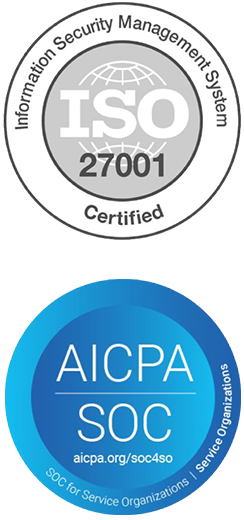Justperform
- EPM
- Thought Leadership
Most effective approach for EPM solution implementation
In this world of “Survival of the Fittest,” business agility is no more a luxury but a must-have for any organization. The Covid19 pandemic just showed the importance of businesses being nimble and responsive.
Agility is developed when businesses are highly responsive to the ever-changing VUCA (Volatility, Uncertainty, Complexity and Ambiguity) world. This even helps businesses gain a competitive advantage over others.
Enterprise Performance Management (EPM) (also referred to as Corporate Performance Management) plays a crucial role in fostering business agility. EPM processes in an organization include Budgeting, Planning, and Consolidation. They connect every part of the business to aid in better decision-making and nurture flexibility.
There are quite a few Enterprise Performance Management (EPM) software that helps organizations build and execute these business processes.
No matter how advanced and technically sophisticated a software is, it delivers results only when business processes are effectively defined.
The goal of this blog is to help you understand:
The Traditional Approach to EPM solution implementation
Challenges of the traditional approach
“The JustPerform way” for an effective, efficient & agile SAP EPM adoption
Before dwelling deep into the listed topics, let us first understand Enterprise Performance Management (EPM)?
According to Gartner, EPM is a process of monitoring enterprise performance to improve it through better decision-making. Typically, planning, budgeting, forecasting, and reporting processes are considered as EPM processes. EPM is also known as Corporate Performance Management or CPM
Now, the next question is how these EPM systems are adopted and implemented within an organization?
The Traditional Approach to EPM solution implementation
The traditional approach to EPM solution implementation starts with hiring a SI (System Integrator) to help with the implementation process. The System Integrator provides an army of EPM consultants for both technical and functional requirements.
Once the System Integrator is chosen, the company implementing the EPM solution and the SI will go through the following steps:

Business capabilities Design: A business capability is an expression of the capacity, materials, and expertise an organization needs to perform core functions. The business capabilities are designed over a series of meetings and workshops with business users.
Business requirements Documentation: Once business capabilities are designed, all the process modelling components are manually documented. A detailed blueprint covering the overall business process requirements is manually generated.
Technical Configuration and Coding: The digital blueprint is then translated into technical code and configuration, i.e., what the system needs to accomplish to achieve the business requirements. So, all the process components are manually translated into codes to be deployed into EPM solutions.
Deployment of the code to EPM implementation: Once the coding and configuration are done, it is deployed into the EPM solution for the final usage.
This is a brief overview of the typical steps in the EPM implementation process
The traditional approach looks systematic and organized, but is it effective and efficient? Does it deliver effective EPM solutions that foster agility to match the ever-changing business landscape?
These are some pertinent questions to ask yourselves at this point.
Now let us have a quick look at the challenges in the traditional approach to EPM implementation.
Challenges of the Traditional Approach
There are quite a few significant drawbacks of this approach to SAP EPM adoptions.
IT Led rather than Business Driven: Optimum and streamlined processes are core factors for effective EPM implementations. An IT dominant consulting team may not necessarily have the required EPM knowledge. Moreover, a manual translation of the business needs by non-EPM expert consultants may result in uncaptured requirements. This would finally result in EPM solutions that are ineffective for an enterprise.
Resource Intensive & People Dependent: Traditional approach demands a large number of man-days, long timelines, and highly technical steps. It is executed manually, creating roadblocks for efficiency.
Lack of Benchmarked EPM Processes: With a shortage of experts, there is no clear documentation of best practices in the EPM space. Hence, a technically dominant consultant team may not have the required expertise to create robust processes for SAP EPM solutions.
Stretched timelines and Escalated costs: Manual and IT-led implementation leads to an ineffective EPM system that might not reflect actual business requirements. This invokes a series of change requests by the business users, which stretches timelines and escalates costs affecting ROI.
Low Scalability and Flexibility: With an ever-changing business landscape, the company’s needs and requirements do change. A series of tedious steps to undergo a minor change in existing processes may result in low scalability.
These series of challenges put this conventional approach on a backfoot in delivering successful EPM implementation.
The JustPerform Way’ for EPM implementation:
Before understanding ‘The JustPerform way,’ let’s first get to know what JustPerform is?
JustPerform is a new generation, intelligent Corporate Performance Management (CPM) cloud platform. It guides enterprises and organisations in business planning, consolidation, and performance monitoring. It helps them analyse the results that matter, discover insights, and plan for success. Unlike other vendors, JustPerform focuses on letting business users at all levels drive CPM activities, empowering them with an intuitive interface and industry-best practices.
Simply put, it is a platform that digitizes and automates end-to-end Corporate Performance Management (CPM) (also referred to as Enterprise Performance Management).
So, what is the JustPerform way?
‘The JustPerform way’ is nothing but the 4D approach JustPerform uses for transforming the EPM implementations:
Discover
In the Discover phase, an organization can choose the benchmarked EPM processes using the Business reference models available in JustPerform. This helps them build robust and productive EPM processes based on industry best practices. Not just that, they can even discover and assess their existing EPM processes in legacy solutions with JustPerform’s unique One-Click Assessment. This helps them seamlessly assess all the objects in the existing environment with a simple drag and drop in real-time.
Benefits: All the EPM processes are built on industry best practices to deliver exceptional enterprise performance.
Define
In the Define phase, all the organization’s relevant business users get to define their EPM processes in JustPerform. This collaborative platform captures the real business requirements from them and automatically generates the digital blueprint of the entire processes.
Benefits: A business-driven process definition capturing real business requirements.
Design
In this stage, Business users can digitally design their EPM processes with JustPerform. Process Modelling is made seamless with its intuitive and visual modelling capabilities. JustPerform auto-generates the required models for the business based on business reference models chosen at the Discover stage. However, business users can still add or refine those models to reflect the true business needs.
Benefits: Less resource-intensive with accurate and automated process modelling.
Deploy
JustPerform auto-generates all the necessary code and configuration for the EPM processes defined. It seamlessly operationalizes the processes in near real-time.
Benefits: Accelerated EPM Implementations and optimized Total Cost of Implementation.
EPM Implementation Matrix
EPM implementation matrix helps organizations compare different approaches across the most critical facets of a successful implementation.

Now let us map both the ‘Traditional approach’ and ‘The JustPerform Way’ using this matrix.
‘The JustPerform Way’ occupies a significantly higher position than the Traditional approach because:
- It automates & digitizes the entire EPM implementation and addresses the most significant drivers of an effective EPM implementation.
- It helps organizations focus on defining agile and streamlined EPM processes (the core driver of any successful EPM implementation) rather than tedious and technical activities.
Conclusion
What would be the most effective approach, according to you?
A completely automated & digitized approach or a manual, tedious one?
An approach that focuses on technical activities or the one that focuses on defining effective processes?
So, the choice is yours whether to remain agile and catch up with the ever-changing business landscape or be rigid with inadequate EPM solutions.
“There is always a better way to do it. Find it” – Thomas Edison
Summary
- The Traditional Approach to EPM solution implementation
- Challenges of the Traditional Approach
- The JustPerform Way’ for EPM implementation
You may also like
No Related Posts Found

